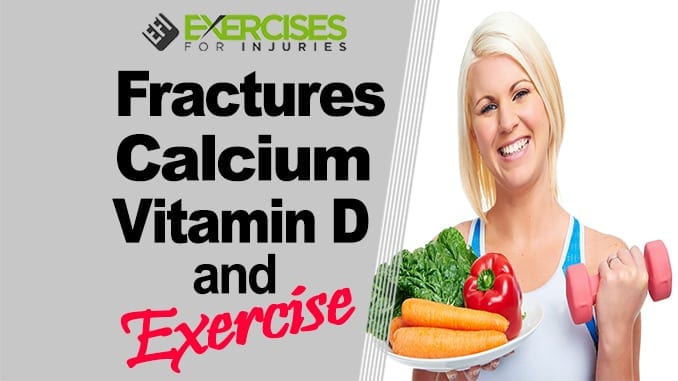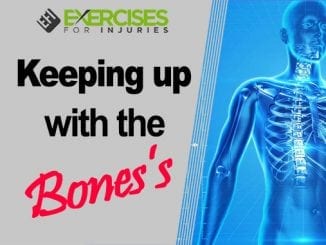
Bone health is essential for your body. In addition to preventing osteoporosis, it also helps decrease the risk of fractures, inflammation, and other severe medical conditions. One of the most prevalent problems with bone health is low calcium intake. This can often result from not eating enough dairy products or from digestive problems such as celiac disease or Crohn’s disease. If you have any of these conditions, you may need to take a calcium supplement to ensure that you get enough calcium in your diet. Keep reading to learn more about other tips for bone health, given your bone type and age.
Bone Health Basics
Protecting your bones is vital to stay healthy and avoid serious health problems. Bone health is essential for the body in many ways, including:
- Preventing osteoporosis and reducing the risk of fractures
- Reducing inflammation
- They are helping with other significant conditions such as high blood pressure or diabetes.
When it comes to bone health, nutrition is vital. Some bone types need more calcium than others, including those with an active lifestyle and those with a family history of osteoporosis.
One of the most common problems with bone health is low calcium intake. This can often result from not eating enough dairy products or from digestive problems like celiac disease or Crohn’s disease. If you have any of these conditions, you may need to take a calcium supplement to ensure that you get enough calcium in your diet.
Bone Tissues
Bones are living tissue that provides support and protection to the body. They also contain blood vessels, nerve endings, and marrow. Bones vary in shape and density, depending on their location and function. There are different types of bones in the human body with varying functions. Learn more about these bones below!
Red Bone Marrow. This type of bone is found in the larger leg bones and includes the femur, tibia, and pelvis. The red bone marrow is most common when you are a child but is less common after puberty.
Yellow Bone Marrow. The yellow bone marrow becomes more common as you age, and you are a lot more at risk for fractures from osteoporosis or other diseases like leukemia and lymphoma. This type of bone is found in the skull and the breastbone.
Gray Bone Marrow. This type of bone is found on the ends of long bones such as the femur, tibia, and fingers. Gray bone marrow is always present throughout your lifetime. Still, it may decrease in size with age due to reduced activity such as weight-bearing exercise from walking or running. Increased activity such as playing sports or exercising regularly may increase its amount.
The Importance of Vitamin D in Bone Health
Vitamin D is a necessary vitamin in the human body that helps strengthen bones and muscles. If your body doesn’t get enough Vitamin D, it cannot absorb calcium as effectively, which is essential for good bone health. Not having enough Vitamin D can lead to rickets: a condition characterized by weak bones and muscle control, bowed legs, stooped posture, and even delayed growth.
Vitamin D is found in very few foods, so getting enough Vitamin D through the diet is essential. Some foods naturally contain Vitamin D, and some are fortified with it. Fish such as cod, salmon, and tuna are the most common sources of naturally occurring Vitamin D. Still. Other fish also contain small amounts of Vitamin D. Dairy products such as milk, cheese, and yogurt are good sources of Vitamin D. Still. They’re not the highest sources. The best source of naturally occurring Vitamin D comes from sunlight: so getting 20 minutes a day outside without sunscreen can help your body produce this vitamin. Some people need to supplement to ensure their bodies have enough of it.
Vitamin D helps the body absorb calcium, which is essential to bone health. If you live in a place that doesn’t have any sunlight, your doctor may recommend taking a vitamin D supplement to ensure you get enough of this essential nutrient. You can also get vitamin D from fatty fish and eggs.
The Importance of Calcium in Bone
Calcium is vital for your body as it helps prevent osteoporosis and decreases the risk of fractures, inflammation, and other severe medical conditions. One of the most prevalent problems with calcium intake is low calcium intake. This can often result from not eating enough dairy products or from digestive problems such as celiac disease or Crohn’s disease. If you have any of these conditions, you may need to take a calcium supplement to ensure that you get enough calcium in your diet.
Calcium is a mineral used in your body to help promote strong bones and teeth. Calcium maintains healthy teeth, bones, muscles, and blood clotting. It also helps with controlling your heart rate and muscle contraction. Calcium is essential to your diet because it helps protect you from osteoporosis. Osteoporosis occurs when people lose too much calcium from their bones, and the bones become brittle and weak.
A calcium deficiency can also lead to conditions such as rickets, osteomalacia, muscle spasms, slow growth in children, or seizures. You can prevent these issues by ensuring you get enough calcium from food sources or supplements if necessary. A calcium deficiency can also cause problems with your gut, such as constipation or nausea. These symptoms can be fixed by taking a supplement to correct the issue.
Exercise Importance in the Bone Health
Maintaining a healthy weight and exercising are essential, especially for women over 50. Exercise also helps improve balance, reduce fall risk, and prevent fractures. In addition, it has been shown that people who exercised had an increased ability to balance their calcium and vitamin D intake.
Exercise will not be enough to help people with osteoporosis or other severe conditions. But it is helpful for those without any other pre-existing medical problems and can slow down the rate of deterioration in their bones as they age.
One of the benefits of exercise is improved balance and coordination. This becomes more important as we grow older because it can help to prevent falls, which might result in broken bones.
Essential Facts for People Over 50
Several excellent studies have recently been published in the medical literature over the past few months. These have documented several essential facts that should be of interest to all readers over 50, which at this time seems to represent most of the population of the Hi-Line.
Fractures, incredibly hip and spine fractures, are not only painful, disabling, and expensive to treat but also significantly decrease life expectancy.
Following a hip fracture, a third of the people will die in a year, not directly of the fracture but of the various complications that follow the injury. Statisticians have calculated that this country’s mortality rate following fractures in women over 50 years of age is slightly greater than deaths from breast cancer.
The leading cause of hip and spine fractures is osteoporosis (loss of bone calcium). Osteoporosis is always preceded by osteopenia (a technical term meaning less than ideal calcium in the bone), something that is not too bad but less than perfect.
Your bones are constantly changing, and you’re never too young or old to care for them. We can do several things to keep our bones healthy and strong. Live your life with an eye on your bones with these few simple steps.
Rick Kaselj – [email protected]
Registered Kinesiologist Specializing in Injury Rehabilitation
Surrey, BC, Canada




